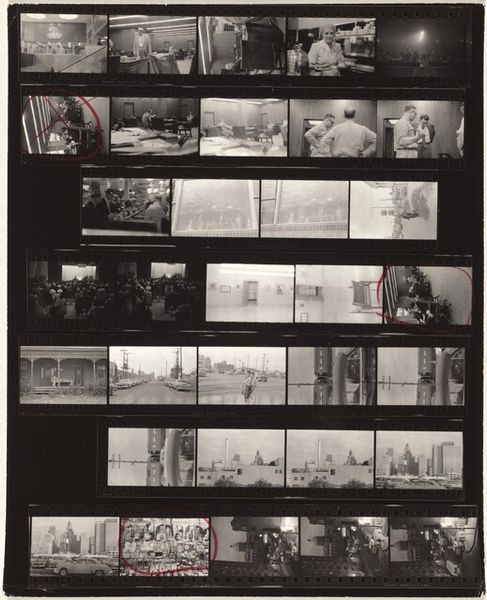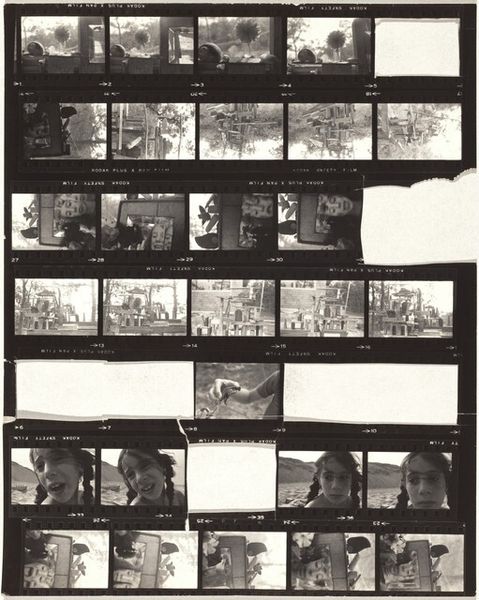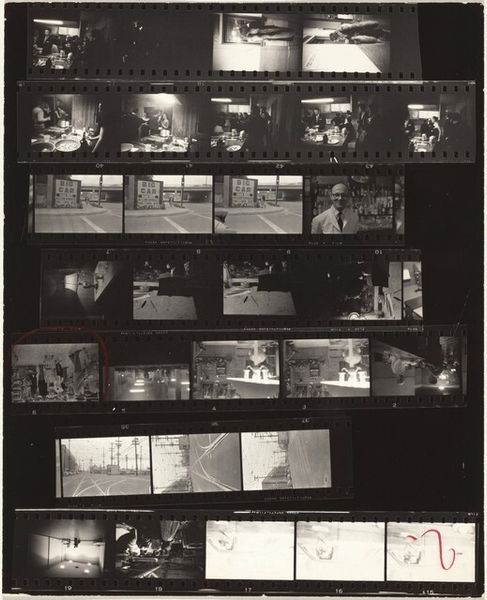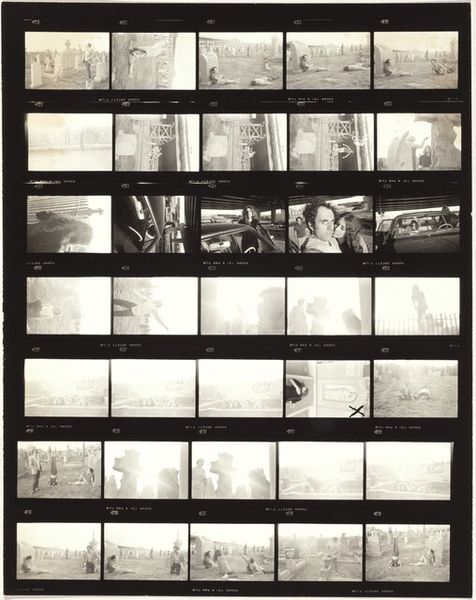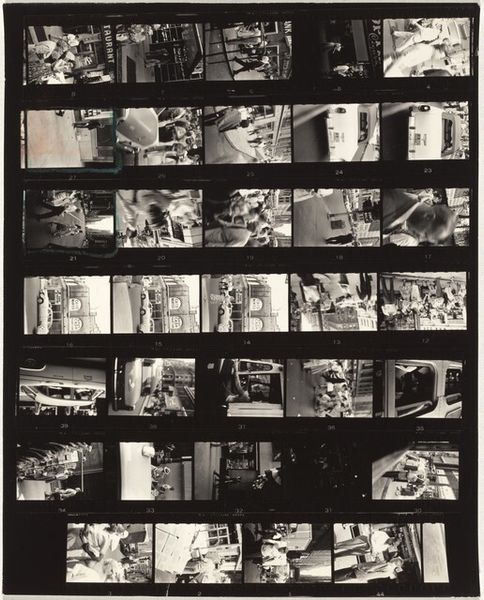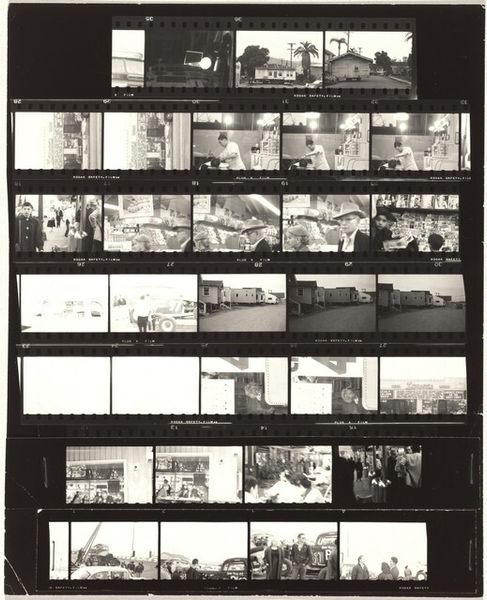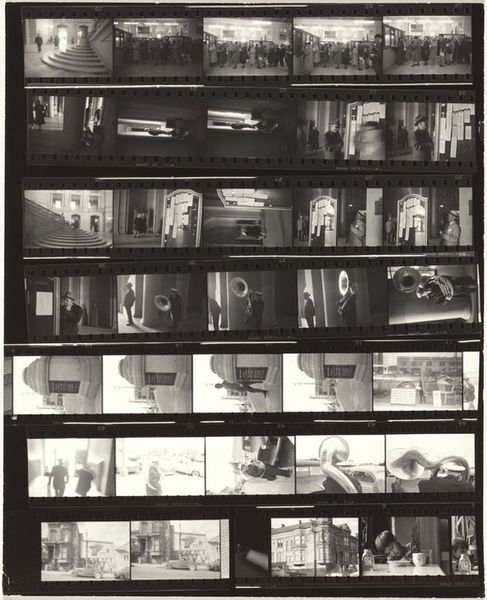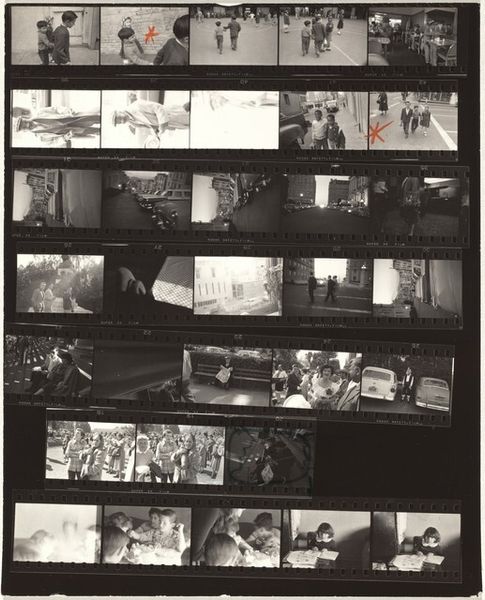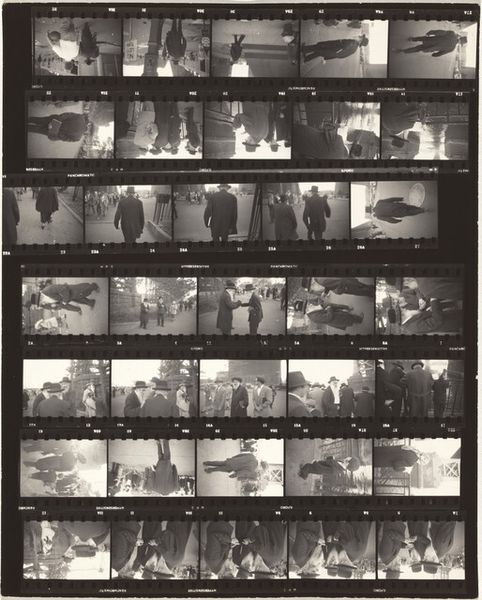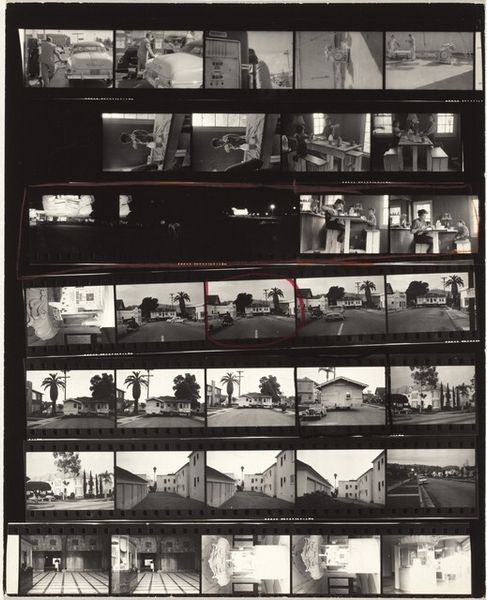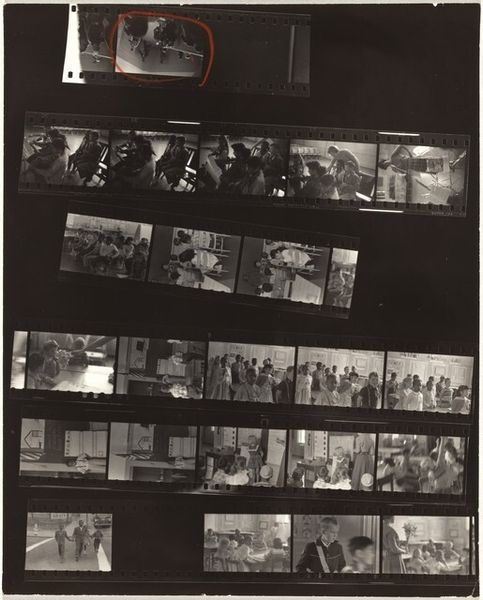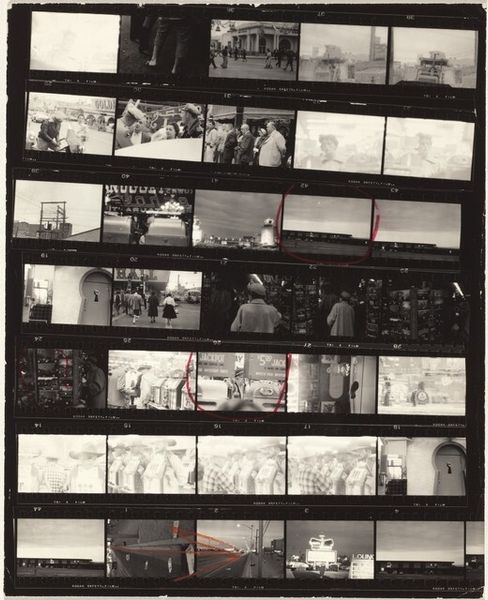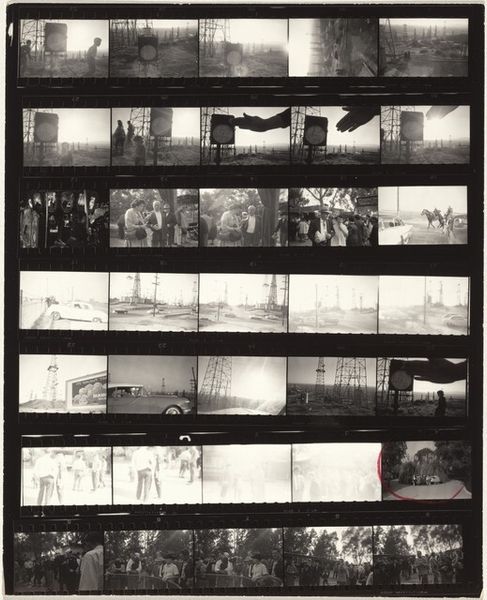
photography, gelatin-silver-print
#
street-photography
#
photography
#
gelatin-silver-print
#
monochrome photography
#
pop-art
#
cityscape
#
monochrome
Dimensions: overall: 25.3 x 20.2 cm (9 15/16 x 7 15/16 in.)
Copyright: National Gallery of Art: CC0 1.0
Curator: Let’s turn our attention to Robert Frank’s photographic work from 1955 entitled "Guggenheim 119—New York City," rendered in gelatin silver print. What’s your initial take on this contact sheet? Editor: It strikes me as a powerful grid, like a visual score hinting at so many different, unseen stories of the city. There is a raw energy present in this piece. What do you find most evocative here? Curator: I am drawn to the symbolism embedded in its layout. A contact sheet itself speaks volumes; it represents the artist’s process, their choices, and the raw moments captured before refinement. Here, the mundane—shop windows, children—becomes monumental through repetition. How do you interpret Frank's lens in portraying post-war American society? Editor: In terms of intersectional context, Frank presented a gritty counter-narrative to the dominant narratives of 1950s America, highlighting themes of alienation and social inequality, captured raw in gelatin silver. Look at the framing, his conscious choices create such tension. Curator: Precisely. Consider those repeating images of shop windows and consumer goods. In iconographic terms, these aren't just background details but are rather potent symbols of the era’s burgeoning consumer culture, a phenomenon influencing social structures. Editor: Absolutely, and one could argue that Frank deliberately uses this method of montage, mirroring a kind of relentless consumption and social performance, while using stark realism. There are very diverse characters and stories presented, as the eye wanders through Frank's visual journal. Curator: Do you sense an underlying critique of the societal norms through such arrangements? How might it relate to the era’s psychological landscape? Editor: Undoubtedly. His street photography captured intimate fragments of lived experiences, exposing both the facade and the reality of American aspirations. It acts as both record and commentary. What stands out in terms of its cultural legacy for you? Curator: I am fascinated by how he documented the intersection between personal vision and collective cultural identity in that pivotal time. Frank transformed mundane street scenes into lasting cultural documents, urging future generations to re-examine their relationship to visual culture. Editor: Looking at the final piece in the series now, I really see the potential and how the act of selecting and curating could radically change its meaning and impact. There are lots of powerful juxtapositions and social realities at play here.
Comments
No comments
Be the first to comment and join the conversation on the ultimate creative platform.
